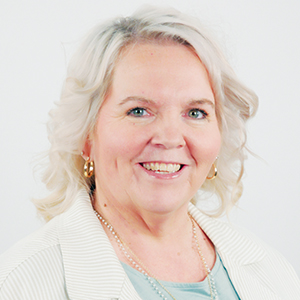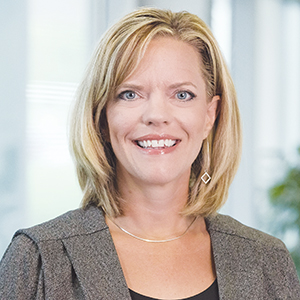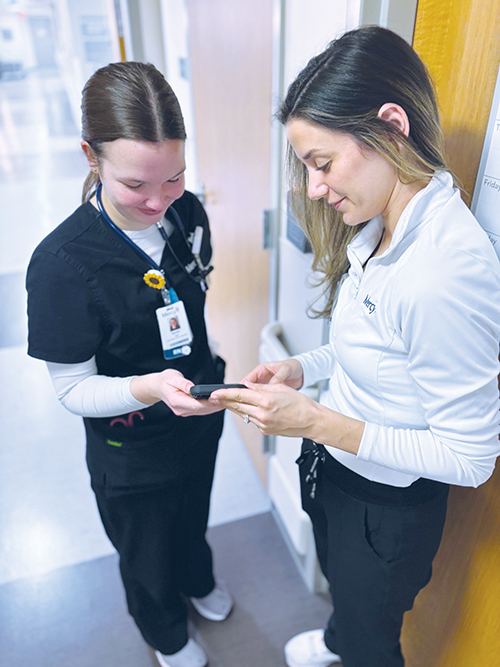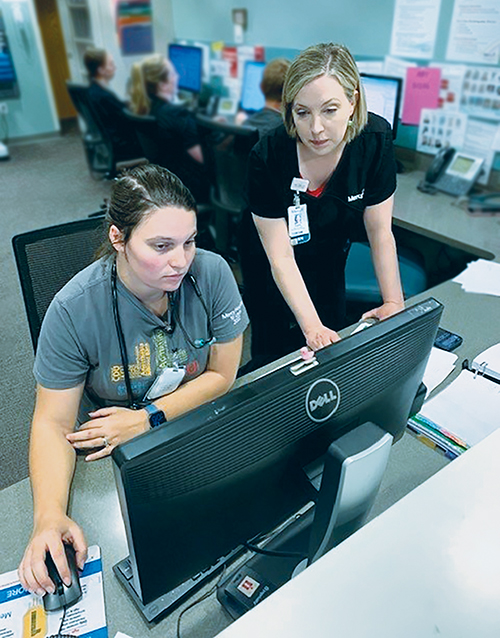When Tracy Breece and Cheryl Denison and a team of nurse leaders visit Mercy hospitals to see how technology is helping or hindering nurses, the nurses track them down.

"They're like, 'Oh, she's here. Are you getting all of my feedback?'" said Breece. "They understand that feedback loop is important, and they're eager to share."
Breece, executive director of nursing informatics, and Denison, nursing systems engineer, are leading Mercy's Project ANEW, which stands for Advancing Nursing Efficiencies and Workflow. The project involves evaluating existing, new and prospective technology and protocols to determine how best to use them to optimize the work of nurses at the Chesterfield, Missouri-based system.
Evolving landscape
At the start of this work a few years ago, a team of nurses led by Breece and Denison traveled to Mercy hospitals to listen to nurses talk about the integration of technology in their jobs.

Both Breece and Denison have nursing backgrounds. They have tended patients, coped with call lights, and charted information.
But coming out of the pandemic, the technological and nursing landscape had changed. Older nurses were retiring, and fewer younger people were choosing to enter the profession. Artificial intelligence was advancing rapidly.
Breece said what she and Denison heard from nurses was profound. "We thought we knew, but we had no clue," she said.
With Project ANEW, Breece and Denison are helping Mercy take a fresh look at the role of technology in nursing, whether it's hurting or helping, and what might need to change.
"Nursing is science, technology, engineering and math," said Breece. "The advent of technology integration has allowed us to really begin thinking about our profession as engineers, as architects of workflows that allow us to be a nurse."
"We're trying to keep ahead of where technology is leading us," said Denison.
Mercy has more than 50,000 caregivers in its hospitals, convenient and urgent care locations, imaging centers and pharmacies across Arkansas, Illinois, Kansas, Missouri and Oklahoma. Not all locations have the same technological systems in place.
New solutions
After listening sessions at a dozen hospitals, Breece and Denison have helped implement some new technology and workflows. Among the actions prompted by the sessions was to take a fresh look at patient call lights, which go to a mobile phone nurses carry on their shift. The phones have about two dozen apps that interrupt the nurse, including one that relays patient call lights.

Mercy established a triage system so that not every call light or alert goes to every caregiver on the floor. Within the first year, technology changes helped Mercy eliminate 250 million redundant button clicks and gave nurses back an average of 32 minutes per shift.
Mercy nurses, along with a team of Mercy data scientists, designed a first of its kind AI tool to streamline hospital admissions from the emergency department. In a recent survey of 450 nurses, 80% reported that the information they received during the process was more complete and easier to follow. Patients face fewer delays in getting into a room.
Nurses also are testing ambient listening technology on the phones. An app records what nurses say, including during a conversation with a patient, and puts it in into fields within an electronic health record. Other technology can summarize a conversation, but this tool picks up on specifics such as urine output or medication administered and places the information into the proper fields.
Breece said she was with a younger nurse who was eager to test the new technology on its first day. The nurse had a long, difficult conversation with a patient about her course of treatment. As they finished, the patient asked the nurse: "Will you pray for me? But more importantly, will you pray for my surgeon? He is going to need it."
They prayed together, and when the nurse left the room, she looked to see what had been documented. The tool noted in the spiritual care field of the EHR that she had prayed with the patient. The prayer might have otherwise been "invisible work" a nurse wouldn't have documented, but the technology captured it, noting its importance, "That day was so transformational, not only to describe how we can use new technology to support nursing care and processes but allow our patients to share in that care delivery, and in our case, our Catholic ministries, to pray," Breece said.
Denison said that surprisingly, older nurses are embracing the technology and using it to help the younger generations. "Our younger generation struggles sometimes communicating with people, especially for a long period of time," she said. "Honestly, our older nurses have been showing our younger nurses how it's done."
She pointed out that the ambient technology doesn't work if nobody talks. "It's giving the nurses more courage to do more and to speak more and be present with the patient, which really has been excellent," she said.

Unexpected advantages
There are other uses for the mobile platform, such as barcode scanning to document a unit of blood being used in a transfusion. Breece was in a patient's room when she tested the new process with two nurses, and they told the patient what they were doing. Breece asked the nurses if the device saved them time. The nurses said yes, and the patient chimed in, "Absolutely, they save time! Because the last time it was much longer than this!"
One nurse who uses hearing aids appreciated being able to use the mobile device to connect to and turn up the volume on her Bluetooth stethoscope, which gave her more confidence in dealing with patients. "I can take care of my patients in the way I want to take care of my patients," she told Breece.
Mercy's mission and values have driven Breece and Denison in their Project ANEW work and they've adapted as needs and technology have changed.
"We've turned things off that we have turned on, and that is a rarity, because we're listening," Breece said. "We're listening with the nurses' voices at the center of what they need, rather than telling them what they need."
Denison said they have to be thoughtful in what they decide to utilize, especially as technology like AI advances, and admit when they are wrong or when something no longer works. That's how they gain the trust of nurses and uplift the profession of nursing, she said.
"We've always been pioneering, like the Sisters of Mercy before us, that were brave and went out into a new world and helped care for individuals," said Denison. "We like to be that too now and really lead with that mission and vision."
